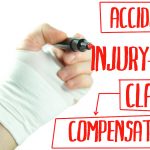Burn Degree Classifications and What They Mean for Your Case
Burns are amongst the most common personal injuries. According to the Center for Disease Control (CDC), 1.1 million burn injuries require attention, and out of this number, 4,500 of these people die. Oftentimes, these burns can be due to incidents that happened at the worksite. Even worse, if people don’t die from a burn, the wound still puts them at risk of infection as they heal. Although most people are familiar with first, second, and third-degree burns, the damage can go far beyond. We discuss the classifications of burns and how it can affect those who are dealing with these injuries.
Types of Burn Injuries
Before we can touch on the levels of burns, it is important for people, especially those recovering from grave injuries, to understand the different types, which include:
Thermal Burns
This is what many may consider the most “common” type of burn as they’re caused by a flame, heat, or skin-contact with an extremely hot object.
Chemical Burns
Although these burns are seen much more in industrial settings, they can occur when coming into contact with cleaning detergents or other harmful chemicals. Chemical burns can be misleading as they appear to be harmless, at first. They can worsen rapidly over time as they continue to react to the damaged tissue.
Scald Burns
These burns are often seen in incidents where people accidentally come into contact with hot liquids, such as boiling water or cooking oil.
Electrical Burns
These kinds of burns tend to be the most painful and the most serious. Similar to chemical burns, they are not immediately visible, especially as the burns can be internal. These burns can go as far as causing heart attacks, neurological damage, and even ruptured eardrums. Even a small electrical burn can cause someone to potentially lose a limb.
First-Degree Burns
First-degree burns are similar to the impact of that of a sunburn. These burns have the potential to cause dehydration. Since the outer layer of the skin—also known as the epidermis—is the only layer damaged in this burn degree, burns typically heal within a couple of days. As the skin heals, the damaged skin peels away, welcoming healthier skin. Hospitalization is required if the pain is intolerable or if there is a fluid imbalance.
Second-Degree Burns
Under these more severe burns, there may be blisters present and the injury will impact both the epidermis and upper layers of the dermis, which is the layer just below the exposed skin. The wound is typically pink or red in color, extremely painful, and may appear wet or flesh-like. The type of wound is expected to heal within several weeks and scarring is typically minimal. Additionally, this injury will destroy parts of the epidermis and most of the dermis as well.
Third-Degree Burns
These burns are also known as “full-thickness” burn injuries. As odd as it may seem, these burns may, at times, be less painful due to the fact that the nerve endings have been damaged. The outer skin and full inner skin layer are damaged. They typically appear as an open wound and can look dark red, white, brown, and leathery, or even charred. Medical attention is advised immediately for those who have experienced third-degree burns.
Fourth-Degree Burns
Fourth-degree burn injuries occur when extreme heat damage completely destroys the dermis and goes as far as affecting the muscle tissue. Similar to third-degree burns, scarring is bound to form and the victim may not immediately feel the damages. This burn can also cause the loss of keratin, where hair shafts and fingernails and toenails may never grow back. Skin grafting is often required and permanent motor damage may also occur.
Handling a Settlement for Burn Injuries
Once the degree of the burn is determined, the facts of the incident of the accident are examined. This will ultimately indicate how much the victim will receive in damages when it comes to medical care and coverage. If the defendant acted deliberately or is found grossly negligent, punitive damages may possibly be assigned. An example of gross negligence includes a manufacturer’s failure to conduct safety testing on a product or machinery.
Smith, Alston, Darner, & Lee Law – We Are Here to Protect You At All Costs
If you’ve recently undergone a burn injury or any other kind of personal injury, we advise that you seek medical attention and get in touch with our law firm today to help you receive the coverage and compensation you deserve.




